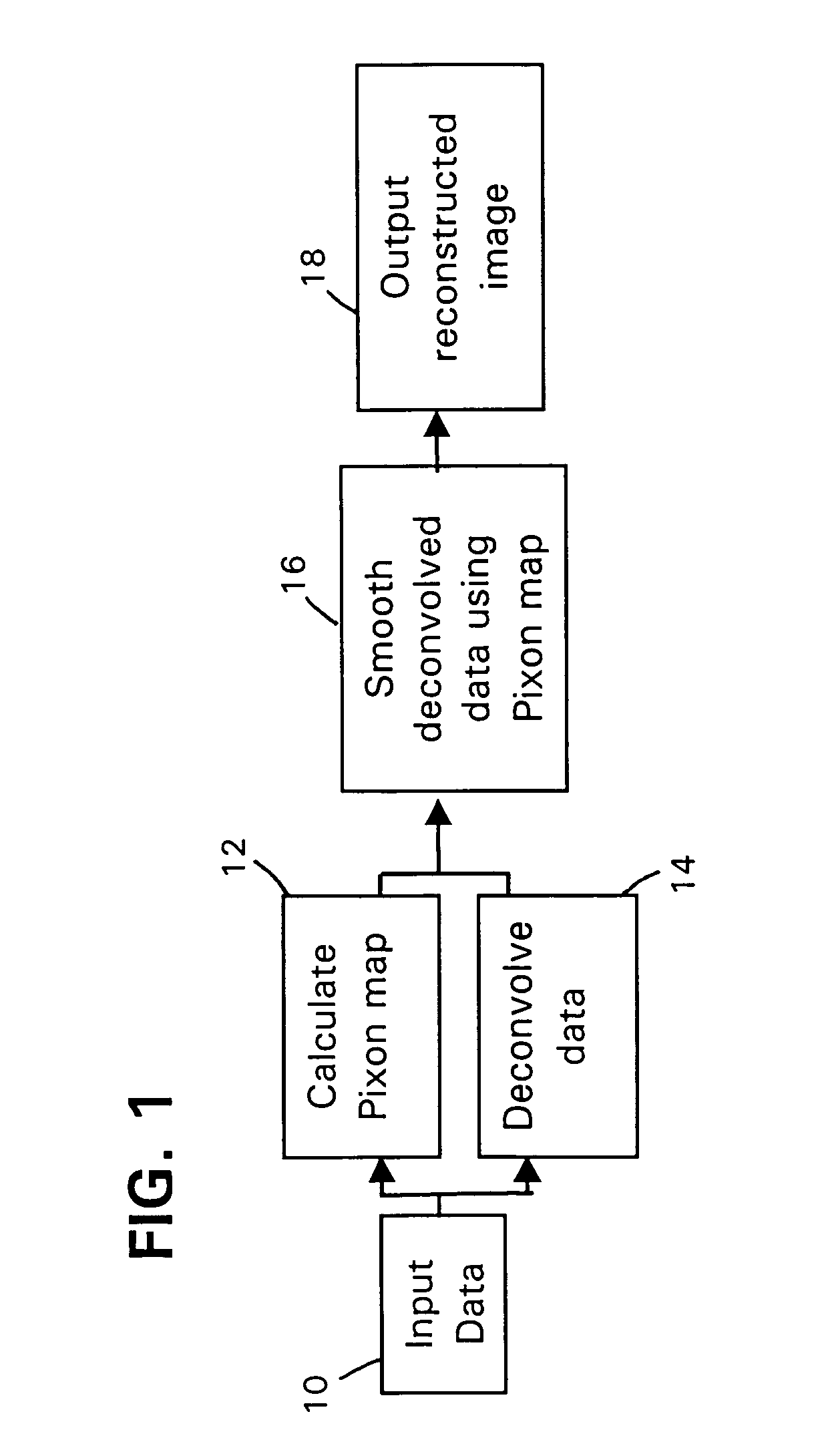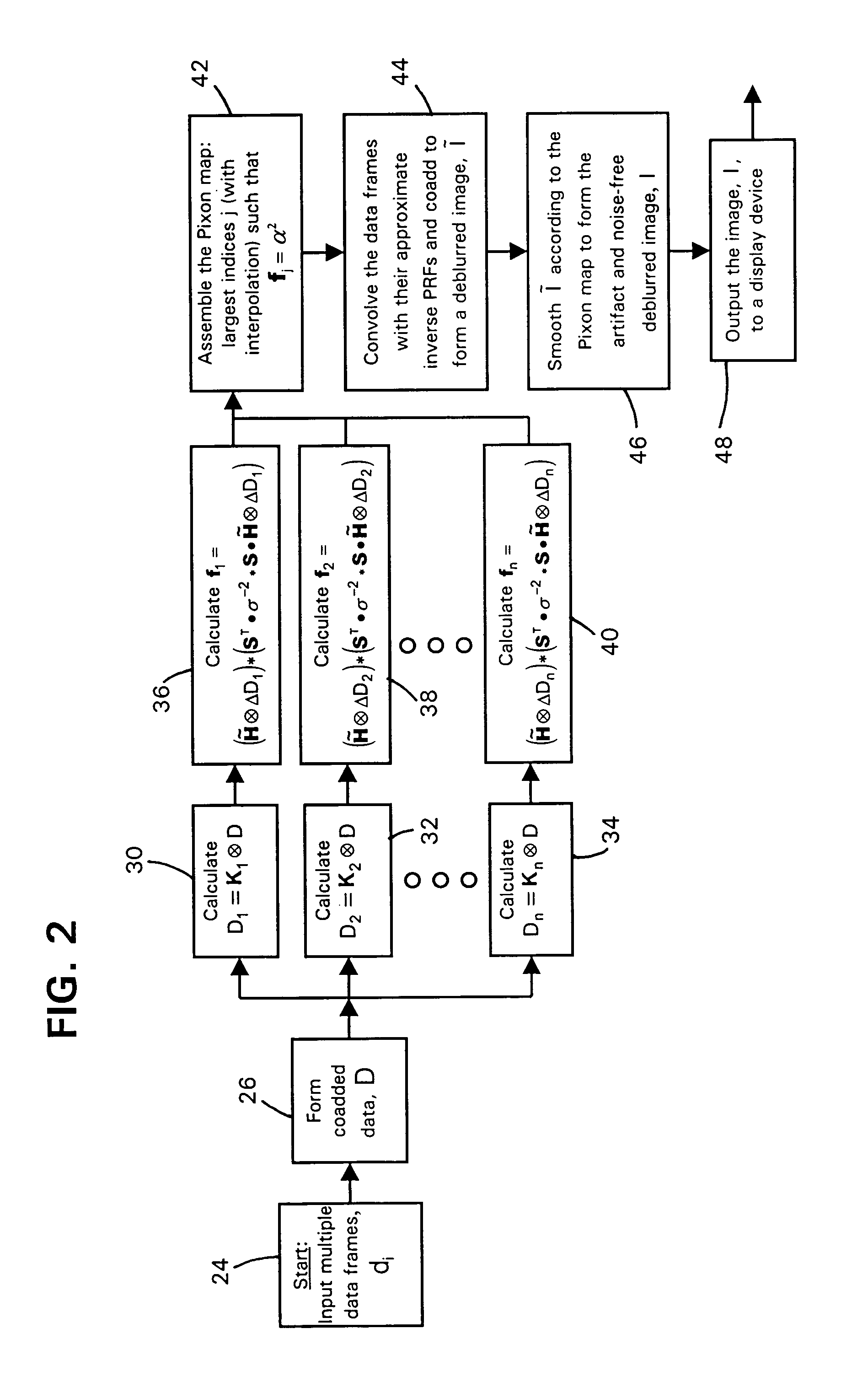High speed signal enhancement using pixons
a high-speed, signal-enhancing technology, applied in image enhancement, image analysis, instruments, etc., can solve the problems of lack of clarity, low contrast and blur, negatively affecting etc., to improve image sharpness and detail, improve image quality, and reduce noise
- Summary
- Abstract
- Description
- Claims
- Application Information
AI Technical Summary
Benefits of technology
Problems solved by technology
Method used
Image
Examples
Embodiment Construction
[0025]As shown in FIG. 1, input data 10 consist of points of a digitized image, i.e., an image comprising a plurality of pixels, where each pixel represents an image data point. The input data 10 are processed by a combination of one or more conventional image processing techniques to form an image model that is smoothed by a plurality of different Pixon™ kernels and the PRF (point response function) to construct a Pixon™ map in step 12. Pixon™ elements, or kernels, are fundamental and indivisible units of information typically made up of a plurality of pixels. The actual Pixon™ elements selected during the reconstruction process represent the smallest number of such units required to fit the data and represent the minimum number of parameters necessary to specify the image. The Pixon™ kernels can have arbitrary properties, e.g., shape, size, and / or position, as needed to best fit the data. The exact shapes of the Pixon™ smoothing kernels are not critical as long as they are central...
PUM
 Login to View More
Login to View More Abstract
Description
Claims
Application Information
 Login to View More
Login to View More - R&D
- Intellectual Property
- Life Sciences
- Materials
- Tech Scout
- Unparalleled Data Quality
- Higher Quality Content
- 60% Fewer Hallucinations
Browse by: Latest US Patents, China's latest patents, Technical Efficacy Thesaurus, Application Domain, Technology Topic, Popular Technical Reports.
© 2025 PatSnap. All rights reserved.Legal|Privacy policy|Modern Slavery Act Transparency Statement|Sitemap|About US| Contact US: help@patsnap.com



